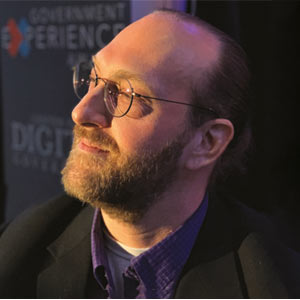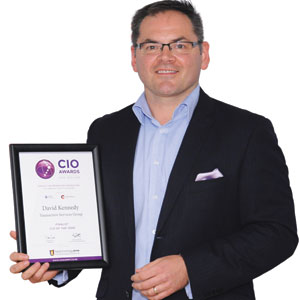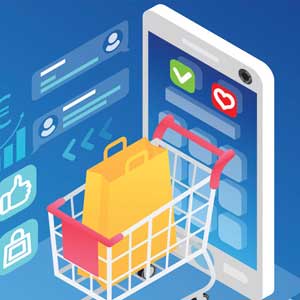THANK YOU FOR SUBSCRIBING

Looking at a Smart City Deployment Model
Scott McCarley, Sr. Director Solution Management, Smart Cities, PTC


Scott McCarley, Sr. Director Solution Management, Smart Cities, PTC
The Main Obstacles to the Deployment of Sensors in Urban Areas
The main obstacles to the deployment of sensors and smart devices into urban areas can be categorized by physical world challenges and digital world challenges.
As we think about adding new physical sensors and devices to our streets, sidewalks, and urban infrastructure in public spaces, we need to recognize that streets, sidewalks and public spaces are valuable assets that the city works extraordinarily hard to keep orderly and in good operation. Not only are they expensive to dig up and repair, but the aesthetics, utility and the public right of way of these spaces is tantamount to the city. An additional physical world concern is that just because infrastructure is located in public spaces, it does not mean that the city owns it. Gaining approval to attach new sensors or devices to infrastructure from different owners can be an obstacle and speaks to the importance of collaboration on smart cities projects.
Digital world obstacles include technology concerns like power, communications, data ownership, privacy, expense, and application value. There are many new sensor technologies coming on to the market, but just because you can measure something and capture new data does not mean that you are delivering value. In order to overcome these obstacles, you need to establish how you can cost-effectively capture data, communicate it to the cloud, and deliver applications that create new insight and value. It is also crucial to demonstrate that data ownership, security, and privacy concerns of the city and citizens are addressed. Security and privacy are of the highest priority, especially if the sensor and system capture any personally identifiable information (PII).
Today, cities and their municipal partners are investing in smart city applications that drive better city outcomes in areas such as energy, water, buildings, lighting, and transportation. However, to lower the physical and digital obstacles and increase the pace of solution deployment, cities should look to leverage existing and proposed investments in physical assets, communication networks, and smart city solutions to make the onboarding of new sensors, smart city IoT applications, and digital experiences easier, less expensive, and more secure. The sum of these investments should result in an open, flexible and agile City IoT Platform that provides universities, start-ups, and small, medium, and large businesses with the means to rapidly deploy new smart city sensors and solutions. By enabling developers, students, and businesses to fully leverage existing IoT infrastructure, maximize reuse, and avoid the reinvention of capabilities that are common to all solutions, cities can stimulate innovation and business growth.
The layers of the IoT ecosystem and solution stack in a smart city deployment include: Physical City Assets
City assets can possess controllers and gateways that provide the ability to expand and incorporate new sensors, and provide access to backhaul communication channels.
It is highly likely that the rate of investment and development in smart cities will continue to accelerate in the years ahead
Communication Networks
Sensor-based solutions and new smart city applications can leverage the multiple types of communication networks from different IoT ecosystem providers. Different networks may be more appropriate for certain physical assets and sensors, based on cost, data volume, and power. Examples of communication networks include: cellular networks, mesh networks used by gas, water, and electric meters, and low-powered, wide-area networks.
Cloud and Server Environments
Sensor and other Smart city application data will reside on a server or in a cloud environment. The following example environments may be leveraged: Microsoft Azure, Amazon Web Services, GE Predix, or an on-premise server hosted by a city, a university or a private business.
Smart City Application Enablement Platform
Application enablement platforms support creating a digital model of the physical world, connecting data sources from assets across networks to it, performing analytics, defining business logic, and building application user interfaces. The ThingWorx Industrial IoT platform from PTC is one example of a platform that provides these capabilities.
The above ecosystem and technology layers come together to quickly onboard new sensors and deploy new secure solutions. Together, they can enable new sensors and solutions to be established with minimal impact to the physical world and minimal effort in the digital world. Take the simple example scenario where a business has developed a new motion sensor to detect seismic earthquake activity, and is building a city solution to warn citizens of a possible tsunami or earthquake. The following list highlights the steps to quickly deploy the complete solution leveraging the above ecosystem and technology stack.
• Attach sensor(s) to street light wireless controllers or gateways
• Choose the cloud environment where data will be published
• Define a digital model associated with the physical world
○ Model includes the meta data (e.g. properties such as location and vibration/motion) and the business logic (e.g. what actions to take when seismic activity is detected)
• Create role-based user interfaces for the different application users leveraging “drag and drop” builder, and define system alerts (web, phone, email)
• Communicate seismic alert to lighting solution API so that whenever the alert is triggered, the lighting system will flash
Changes in Government and Citizen Interaction due to Digital Revolution
The digital revolution and the IoT have resulted in the physical and digital worlds—which we have traditionally regarded as separate entities—converging into a single new reality. Today, many of a city’s best opportunities for innovation, insight, and value creation are happening at the points of convergence between the physical and digital worlds.
One of the most exciting examples of how this convergence will change the way cities communicate with citizens is augmented reality. Augmented reality is defined as the superimposing of digital information, in the form of computer graphics and digital content, onto a live view of the physical world via a cell phone, tablet, or digital eyewear. Augmented Reality will enable a city to engage citizens in new ways with rich visual experiences and digital content specific to the location and city assets being leveraged. For example, cities could deliver 3D animations about a park, square, or landmark including historical information, public transportation location and scheduling, or localized information about sustainability and quality of life improvements associated with new infrastructure investments.
This type of convergence is just one example of the vast potential of smart cities. With so many potential benefits for municipalities, businesses, universities, and citizens, it’s highly likely that the rate of investment and development in smart cities will accelerate in the years ahead.
Check Out : Top Smart City StartupsWeekly Brief
I agree We use cookies on this website to enhance your user experience. By clicking any link on this page you are giving your consent for us to set cookies. More info
Read Also
Advancing Retail through E-Commerce, Cloud and Cyber security
From Code To Impact: Leading Enterprise Ai With Purpose
Reimagining Pension Services Through Responsible Innovation
Maritime: Beyond Systems, Beyond Seas
Human-Centered Innovation in the GenAI Era
The Art and Science of Selling
Responsible Data Leadership in an AI-Driven World
Driving Guest-Centric IT Innovation in Integrated Resorts





















